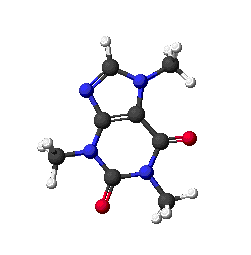
Chemistry
Chemistry 16: 5-8

WebLecture
Acids and Bases: Reaction Mechanics
Outline
- Acid-Base Equilibrium and Reaction Mechanics
- Acid-Base Reaction Types
- Practice with Concepts
- Discussion Questions
- Optional Website Reading
Acid-Base Equilibrium and Reaction Mechanics
If we use the Brønsted-Lowry definitions of acids and bases, we recognize that each acid dissociates to its conjugate base. In general terms for some acid A with a proton, we can write the dissociation equation
HA → H+ + A-
A- becomes the conjugate base of the acid HA, able to accept a proton and reform as HA.
Likewise, if we have a base B- that can accept a proton, we have a synthesis reaction
B- + H+ → BH
Here BH is the conjugate acid of the B- cation
If we have an interaction between an acid and a base, the result is a conjugate pair:
HA + B- → A- + BH
We've also see that a strong acid is one that dissociates completely, while a strong base is also one that reacts completely. If we have a weak acid, we wind up with a solution that has a mix of acid and conjugate base, instead of a complete reaction leaving only the conjugate base. Similarly, if we have a weak acid, we wind up with a solution that has a mix of base and conjugate acid.
Because acids and bases don't necessarily "go to completion" when they dissociate, an acid-base reaction result depends on the relative strengths of the reactants.
Acid-Base Reaction Types
It's worth revisiting our table from chapter 3: which shows us what happens when acids and bases of different strengths mix. The result depends on whether the acid or base is strong or weak.
| Strong Base | Weak Base | |
| Strong Acid | HA --> H+ + A- complete
BOH --> B+ + OH- complete H+ + OH- --> H2O Net reaction is neutralization |
HA --> H+ + A- complete
BH + H2O <--> BH+ + OH- partial H+ + OH- --> H2O partial BH + H+ --> BH2+ Net reaction is formation of the base compound and the conjugate base cation (an acid): solution is acidic. |
| Weak Acid | BOH --> B+ + OH- complete
HA --> H+ + A- partial H+ + OH- --> H2O partial HA + OH- --> A- + H2O Net reaction is formation of the conjugate acid anion (a base) and water: solution is basic |
Depends on the ionization constants Ka and Kb of the acid and base involved. If Ka is greater than Kb, the acide is stronger and the resulting solution will be acidic. |
Polyprotic Acids and bases.
When an acid has more than one H atom attached, it may be able to donate multiple protons. Because donating the first proton creates a negative ion, the resulting conjugate base is now negatively charged, and will hold onto its second proton with more force. The energy required to detach a second proton is much greater than that required to detach the first proton.
Note that hydronium H3O+ is a polyprotic acid with two possible hydrogen separations:
H3O+ → H+ + H2O
H2O → H+ + OH-
Practice with the Concepts
Discussion Questions
- What are we talking about?
Optional Readings
A list of likely websites that can help.
© 2005 - 2024 This course is offered through Scholars Online, a non-profit organization supporting classical Christian education through online courses. Permission to copy course content (lessons and labs) for personal study is granted to students currently or formerly enrolled in the course through Scholars Online. Reproduction for any other purpose, without the express written consent of the author, is prohibited.